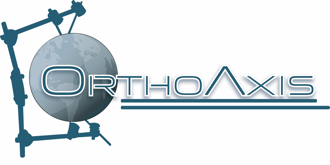Product Overview
For Medial, AMZ, Anterior, Distal, and Proximal Transfers.
Flexible and Simple.
A simple set of instruments allows for precise creation of two compound wedges of bone. Transposing these wedges medializes the tubercle.
“Because of the surgical benefits of the MD3T procedure relative to the AMZ, I have no doubt that this approach will ultimately become the new world standard. The MD3T system will allow the average orthopedic surgeon to safely and reproducibly perform a tubercle transfer.”
Scott F. Dye, M.D., University of California at San Francisco
The MD3T Story…
Transferring the tibial tubercle (TT) to treat patellofemoral disorders is a time-tested and well-established surgical technique. Medial transfer has been practiced since 1888, and anterior transfer was introduced by Maquet in 1976. In 1983, Fulkerson combined these two transfers in the antero-medialization (AMZ) technique. In addition, distal transfer to correct patella alta, and lateral transfer to reconstruct an over-medialized TT, are occasionally indicated. The Multi-Directional Tibial Tubercle Transfer (MD3T) System from Kinamed has unique advantages: it enables the surgeon to move the TT in multiple directions in a precise, predictable, and independent manner, while preserving greater cortical integrity to help reduce the risk of a tibial stress fracture.
The concept of the MD3T Technique is simple:
• A compound wedge of bone containing the Tibial Tubercle and its attached Patellar Tendon is created, the “Primary Wedge.”
• For corrections that include medialization, a “Secondary Wedge” of bone is created medial to the Primary Wedge.
• The Primary and Secondary Wedges are transposed, thus transferring the Tibial Tubercle medially. The width of the Secondary Wedge determines the medial transfer distance.
• For medial transfer, fast-setting bone void filler or bone graft is used to fill the space lateral to the transposed Wedges prior to fixation.
• For antero-medial transfer, additional fast-setting bone void filler or bone graft is placed lateral and posterior to the transposed Wedges prior to fixation.
• The medial and anterior transfer distances can therefore be planned independently of one another.
• Unidirectional anterior, distal, and proximal transfers involve the repositioning of the Primary Wedge only (a Secondary Wedge is not created). (http://www.kinamed.com)












